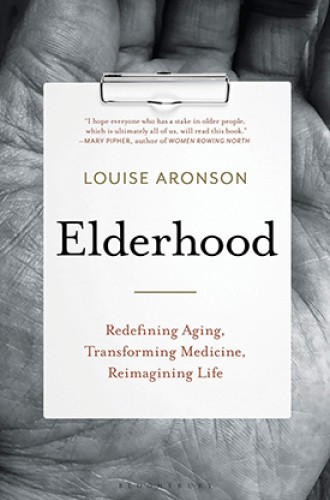Louise Aronson calls for a health-care system that treats elders better
The medical community takes middle-age adulthood as the norm. What if it didn’t?
As life expectancies increase, people are spending more time in the stages of life we call old age. What used to be a few years can now easily stretch into 30—fully a third of the lifespan. Still, in both the medical community and the church it’s common for caregivers to treat old age monolithically, as if it were one uniform span of time. Louise Aronson pushes us to think differently in a provocative book that draws on her experience as a physician to geriatric patients.
Not surprisingly, she critiques the way the medical community treats (and doesn’t treat) old people.
Our health system penalizes hospitals if they don’t fix people and quickly send them home, designates just fifteen to twenty minutes for clinic appointments, and doesn’t provide most nursing facility staff with the time, training, or both to help people in ways appropriate to their life stage. This sets up a vicious circle, as age-blind systems lead to bad outcomes for old people, which in turn reinforce people’s sense that they are not worth treating.
The focus of Aronson’s critique is a medical community that takes middle-age adulthood as the norm. That isn’t problematic in itself, she acknowledges. Something has to serve as the baseline. But when our bodies begin to age and we change physically, mentally, emotionally, and socially, too many medical professionals view those changes as pathological rather than as part of normal development.
In addition, medicine tends to treat the maladies of old age the way it would treat similar symptoms in a healthy 40-year-old, even though the same treatments can have very different outcomes in older bodies: often they are more dangerous and routinely lead to a decline in health rather than an improvement. The medical community also tends to neglect the social settings of aging patients, a factor that becomes increasingly important in later years.
Aronson doesn’t confine her analysis to the medical community. She draws on philosophy, sociology, history, literature, and personal experience to give a comprehensive history of how old age has been viewed over time. Aristotle suggested that aging occurred because of the loss of pneuma, an internal heat or vital spirit that was gradually depleted over time. Novelist and essayist Ursula K. Le Guin rebutted the popular falsehood “you’re only as old as you seem” by responding, “If I’m ninety and believe I’m forty-five, I’m headed for a very bad time trying to get out of the bathtub.” Anthropologist Sharon Kaufman suggests that while it may be difficult to find meaning in the actual process of aging, those who successfully navigate the transition into old age “perceive meaning in being themselves in old age.”
The richness of Aronson’s experiences and her eloquence in conveying them make the book read almost like a memoir. She offers vulnerable glimpses of her own mistakes, shares her most significant learning, and directly names the complexities and failings of the medical system. For instance, she tells the story of her care for Millie, who had had a heart attack at home and was taken to the hospital. Aronson gave specific instructions for how Millie was to be treated once she arrived at the hospital. Through a series of miscommunications, beginning with Aronson’s own hastiness in trying to deal with an overload of patients, Millie ended up sitting in the emergency room for hours before being treated. This anecdote illustrates a common problem: doctors are often asked to provide a level of care that a system hell-bent on efficiency doesn’t allow.
Yet Aronson also offers hope and guidance for how we—as a society and as individuals—can reimagine this significant span of life. She advocates for a paradigm shift in medicine that puts care for individuals above health-care processes and procedures. At the heart of her message is a call to reshape attitudes about old age.
Beliefs about aging are self-fulfilling prophecies; our health and well-being in old age often become what we imagine they will be, whether what we imagine is good or bad. Biology matters, but it’s only one part of a far more complex equation that includes attitude, behaviors, relationships, and culture.
Reading this book as a guide for reflection on growing old has been for me like watching a still picture in grayscale develop color and spring to life. It’s also prompted a reassessment of my ministry with elders. Pastors often lament that the church is aging, and we wonder what that means for the future viability of the church. We look to family programming, energetic youth ministry, and comprehensive children’s ministries as the salvation of congregations. What if we spent as much time and effort thinking creatively about how to use the gifts of our elders? After all, as Aronson points out, the aging years are not just a time of maladies and diminishing capacities. They are also a time of joy, meaning, and fulfillment.





